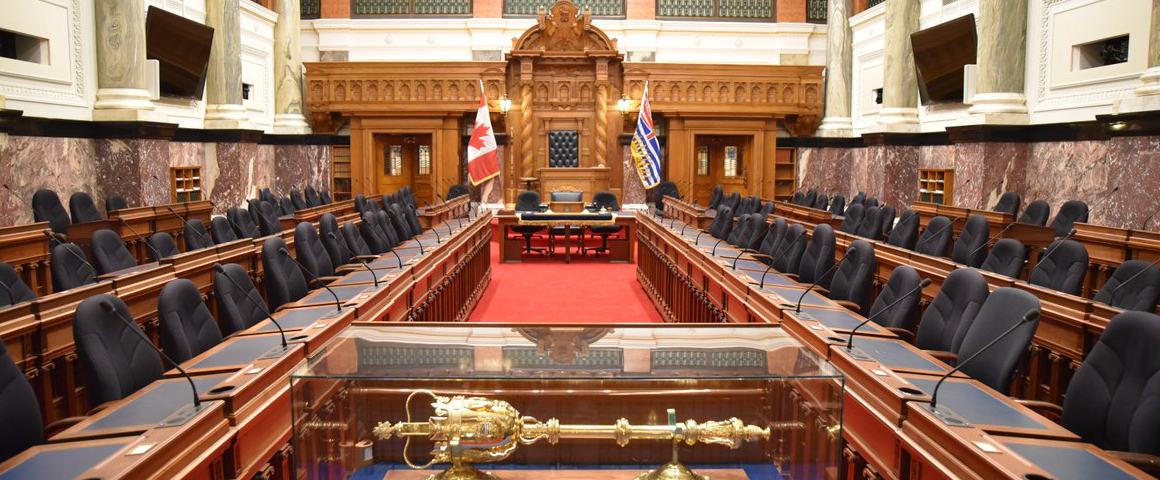Yet another unusual BC election campaign came to a weird conclusion on October 19. In the midst of an “atmospheric river” storm, widespread street flooding and power outages, the result was a near-deadlock – 46 seats for David Eby’s NDP (with 44.6 percent of the popular vote), 45 for John Rustad’s Conservatives (43.6 percent) and 2 for the Greens (8.2 percent).
While recounts could shift the numbers, the outcome recalls the 2017 election, when then premier Christy Clark’s Liberals tried to cling to office but failed when the NDP and Greens reached a supply and confidence agreement which opened the way for John Horgan to become premier.
Looking back seven years later, the three years of that partnership are seen as a time of limited but significant gains by groups which had suffered the brunt of Liberal attacks since 2001, especially labour and low-income earners.
However, it was also starkly clear that the NDP had no intention of challenging the domination of big capital. One of the Horgan government’s first actions disappointed supporters by approving completion of the Site C dam after a phony “review” of the megaproject, followed by a botched – many believe deliberately – referendum on proportional representation.
The NDP-Green partnership did result in minimum wage increases, higher social assistance and disability payments, and some important progress on childcare. But it brought little change in the province’s taxation structure favouring the wealthy and corporations. The government also continued massive tax breaks for the LNG industry, a policy the environmental movements labeled as “carbon bombs.”
Whatever its achievements, that deal abruptly ended in the fall of 2020 when Horgan called a snap election, taking advantage of an early decline in COVID cases to win a big majority. But instead of accelerating the pace, the NDP slowed its reforms to a crawl for the next four years. By early 2024, the new NDP premier Eby was counting on a sharp division in the right-wing opposition parties for a comfortable ride to another majority.
That illusion was shattered last August, as the newly renamed “BC United” opposition in the legislature was swallowed up by the Conservatives, riding on the coattails of federal Tory leader Pierre Poilievre. Suddenly the NDP dream of an easy re-election evaporated. Scrambling to switch gears against a different opponent, the NDP played up Rustad’s insider role in the former Liberal government, and also began releasing some information on the most openly far-right Conservative candidates.
In fact, the full details of Rustad’s team were available to the corporate media, which failed to give serious coverage of this dangerous development throughout the campaign. Rustad himself and at least a quarter of the newly elected Conservative MLAs have clear and direct links to a wide array of openly fascist, conspiracist, ultra-right, racist and transphobic groups, a fact that the media has largely ignored. With the new “respectability” of seats in Victoria, these MLAs are expected to fan further hatred against vulnerable sections of the population and have already vowed to make the Legislature unworkable.
One interesting indication of a growing interest in genuine radical change was seen in the votes for three Communist Party of BC candidates. While the numbers remain low at 617 in total, or an average of 206, this was the highest such average in provincial elections in many years. Independent socialist Eden Haythornthwaite also won 335 votes in Cowichan Valley, an impressive number considering the very close race in that riding.
Many times during the campaign, Communist Party candidates spoke to long-time NDP supporters who were torn between a desire to vote for explicit left policies and their fear of a Conservative victory. Frequent reports have also emerged about the NDP campaign’s difficulties in recruiting their usual number of volunteers.
Assuming the election night outcome remains the same, the best course for trade unions, environmentalists, Indigenous peoples, anti-poverty movements and 2SLGBTQ+ rights defenders will be to pressure the NDP to reach an agreement with the Greens. Such a deal – if it focuses on protecting the rights and interests of the working class and Indigenous peoples, and a move away from tax subsidies to the corporate resource extraction sector – could preserve and hopefully expand social spending in upcoming budgets and help block the Conservative drive to weaponize fear of drugs and crime, and hatred of Indigenous peoples, as political tools.
However, this will not happen automatically. Eby’s NDP has shown an alarming tendency to retreat in the face of Trump-style social media campaigns whipped up by the far-right against a variety of groups, notably Indigenous nations, homeless residents and trans people. Time after time, the NDP has backed down on such issues, most notably last November when the premier threw chief coroner Lisa Lapointe under the bus just as she announced a coroner’s service report which recommended providing a controlled, safe supply of drugs to people without prescriptions.
For the moment, it appears the worst result of the election, a Rustad majority, may have been averted. But it will take strong popular pressure to compel the NDP and Greens to adopt a new supply and confidence agreement based on at least a minimum of progressive principles.
Commentary by the Communist Party of BC, October 22
Support working-class media!
If you found this article useful, please consider donating to People’s Voice or purchasing a subscription so that you get every issue of Canada’s leading socialist publication delivered to your door or inbox!
For over 100 years, we have been 100% reader-supported, with no corporate or government funding.




